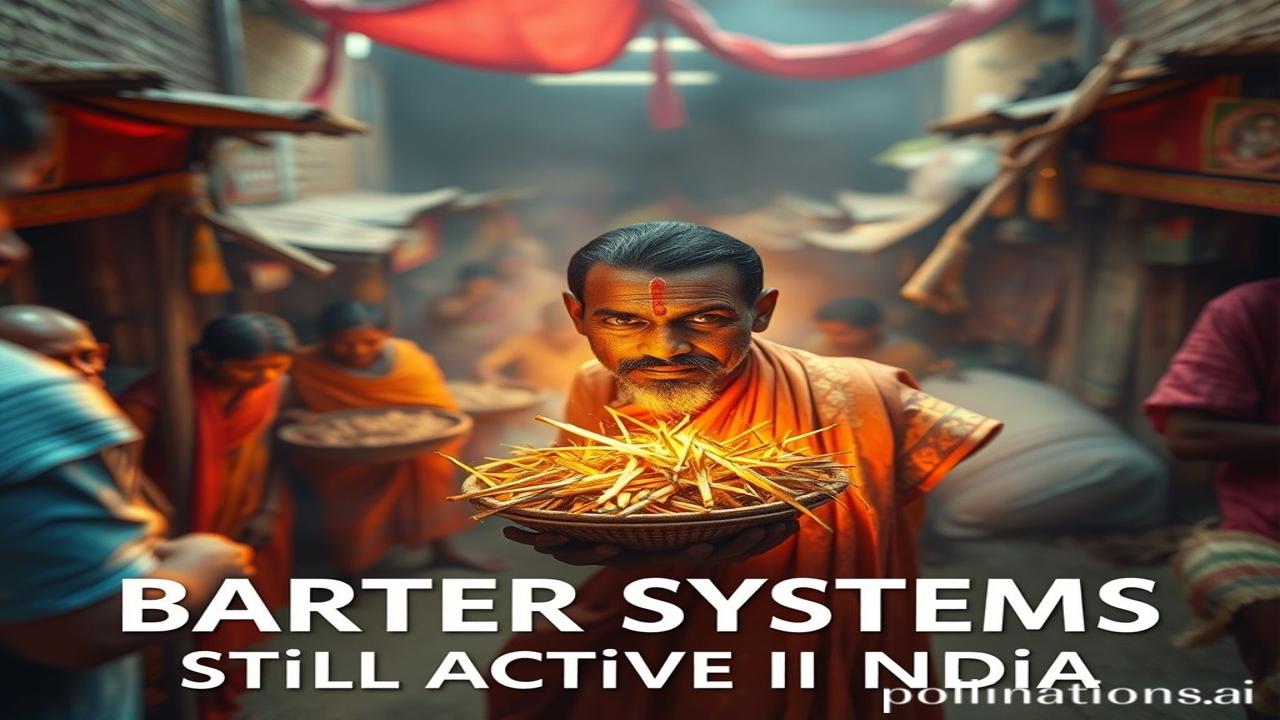The Unsung Symphony of Exchange: Barter Systems in Today’s India
Kabhi socha hai, in shehron ki tez raftaar zindagi mein, gaon ki mitti ki woh khushboo, woh saadgi, kahin gum toh nahi ho gayi? In India’s heartland, where time moves at a different pace, lies a system as old as civilization itself: the barter system. While the world rushes towards digital transactions, the echo of “de de ke le le bhai” still rings true in many corners of our desh. This isn’t just about trading goods; it’s about relationships, trust, and a way of life woven into the very fabric of India.
Barter: A History Etched in Time and Trade
What exactly is a barter system? Simply put, it’s exchanging goods or services directly for other goods or services, without using money. Think of it as the original marketplace, where needs met needs, and relationships were forged over the exchange of grains for cloth, or labor for food.
This practice isn’t some relic of the past; its roots run deep. Archaeological evidence suggests barter systems thrived in the Indus Valley Civilization (circa 3300-1300 BCE). Imagine Harappan farmers trading surplus wheat for handcrafted pottery. Think of Mauryan traders exchanging spices from the south for horses from the north. It was a dance of supply and demand, long before coins and currencies took center stage. Even during the Mughal era, while a formal monetary system existed, barter continued to play a crucial role, especially in rural areas.
Why is it so important? Because it highlights the spirit of self-sufficiency and community. It’s a reminder that value doesn’t always need a price tag. It demonstrates the inherent human need to connect and cooperate.
Zameeni Sach: Life and the Soul of Barter
Imagine a small village in Chhattisgarh. Dadi Lakshmi, her face etched with the wisdom of generations, carefully weaves a vibrant cotton sari. Her arthritic hands move with practiced ease. She doesn’t need cash; she needs rice for her grandchildren. So, she walks to the local haat (market), the sari folded neatly on her head.
There, she finds Ramu Kaka, a farmer whose fields have yielded a bountiful harvest. They exchange pleasantries, discuss the weather, and finally, the trade begins. The sari for sacks of rice, a fair deal based on mutual need and respect. No banks, no interest rates, just a simple understanding between two individuals.
Or picture this: a wandering Baul singer in Bengal, his ektara resonating with ancient melodies. He offers his music to a village gathering in exchange for a meal and a place to rest for the night. His song, a story of Radha-Krishna, a prayer for rain, a lament for lost love, becomes his currency.
These are just glimpses into the daily lives where barter continues to thrive. It’s not about profit margins; it’s about survival, dignity, and maintaining a connection to the land and its resources.
Dharohar aur Pehchaan: The Enduring Echo of Barter
Even in today’s India, dominated by the digital rupee, the spirit of barter lives on. Think of the “exchange offers” you see on e-commerce sites – technically, it’s still a form of barter, though highly formalized. More organically, in many rural communities, families help each other with agricultural tasks during harvest season. This mutual aid, known by different names across India, is essentially a barter of labor.
The concept of Dana, or charitable giving, in Hinduism, also carries a subtle echo of the barter system. Giving something freely, with the understanding that good karma, or punya, will return to you in some form, is a spiritual transaction of sorts. It connects to Bharatiyata because it emphasizes community, shared responsibility, and a deep understanding of interdependence. Even modern food swaps between neighbors or exchanging babysitting services are modern incarnations of the barter system.
Mazedar Tathya: Myth-Buster Time!
Log samajhte hain ki barter sirf anpadh aur gareeb logon ka tareeka hai. Lekin asli sach yeh hai: Even during economic crises, barter systems tend to resurface as people seek alternative ways to meet their needs. They offer resilience and flexibility in times of uncertainty.
Drishya aur Bhavnayein: A Sensory Symphony
Imagine the bustling atmosphere of a village haat. The air thick with the aroma of spices, jaggery, and freshly baked bread. The cacophony of voices bargaining, gossiping, and laughing. The vibrant colours of handloom fabrics, vegetables, and pottery. The rough feel of coarse grain in your hand, the smooth texture of a freshly oiled wooden utensil. The sweat on a farmer’s brow, the smile on a weaver’s face. These are the sensory details that bring the barter system to life, making it more than just an economic transaction; it’s an experience.
Antim Vichar aur Uddharan: A Lasting Thought
The barter system is more than just an ancient trading practice; it’s a reminder that human connection and shared resources are more valuable than any currency. It’s a lesson in simplicity, sustainability, and the enduring power of human cooperation.
“Vasudhaiva Kutumbakam – The world is one family.” This ancient Sanskrit phrase encapsulates the spirit of the barter system, reminding us that we are all interconnected and interdependent. And in a world increasingly driven by individualistic pursuits, perhaps it’s time we rediscovered the wisdom of this age-old practice.
